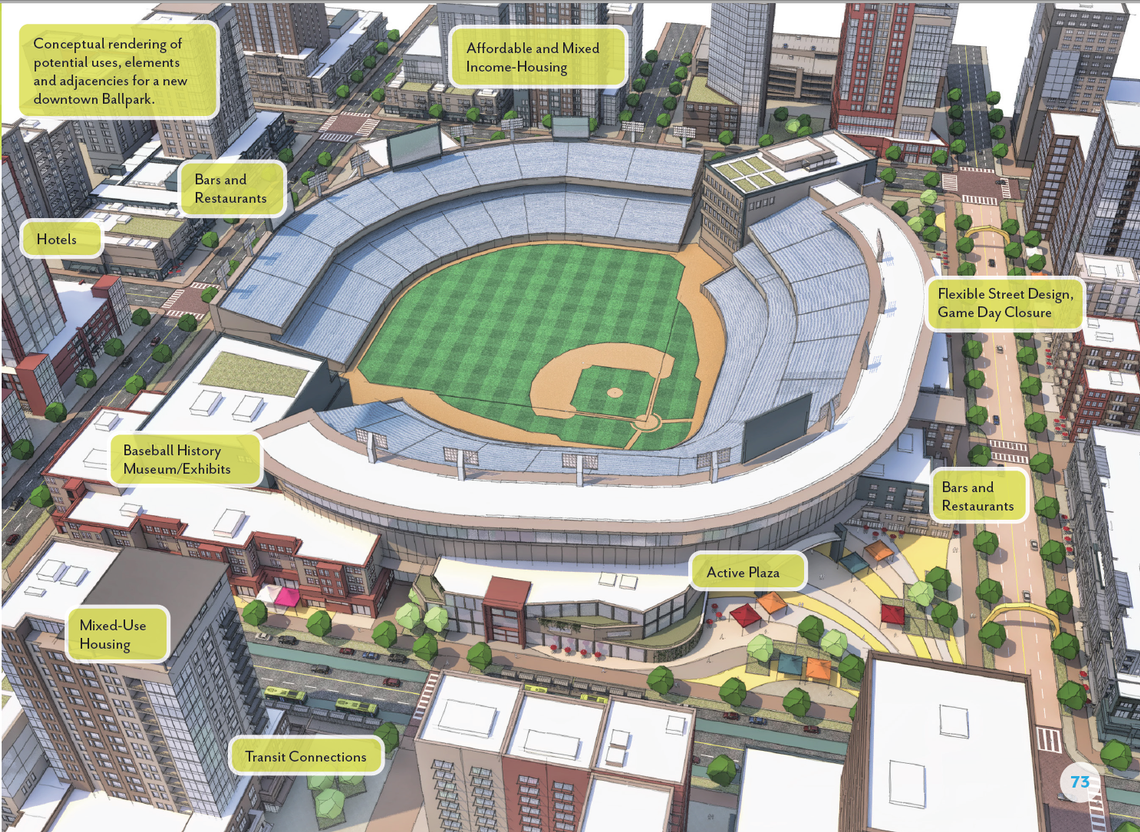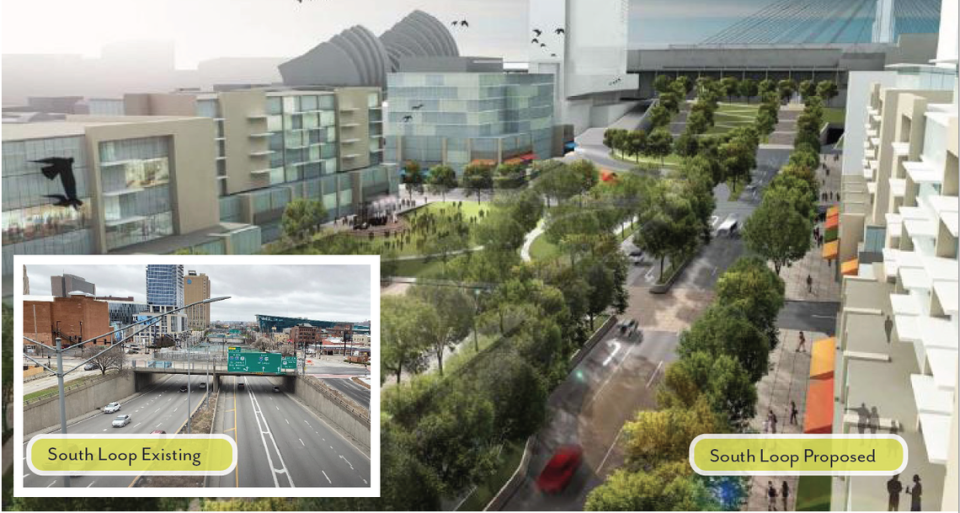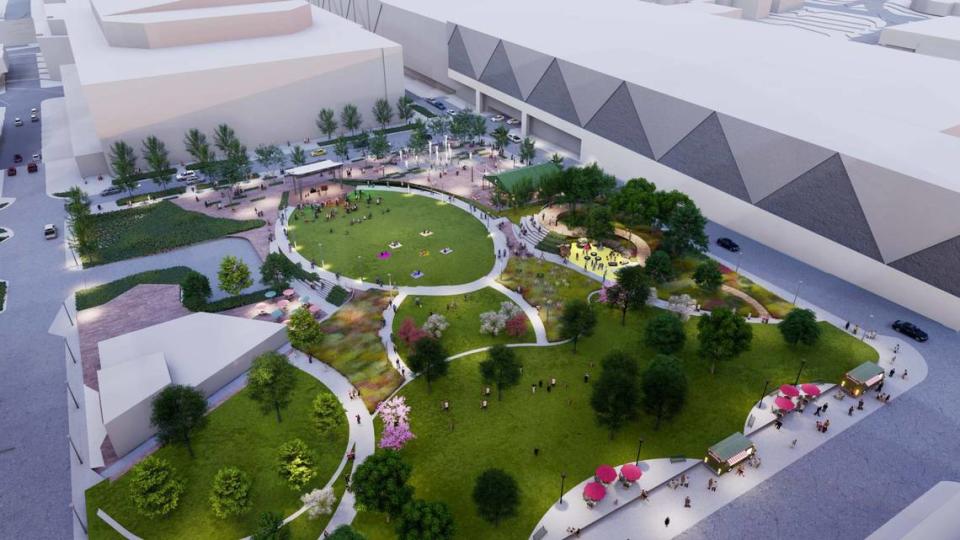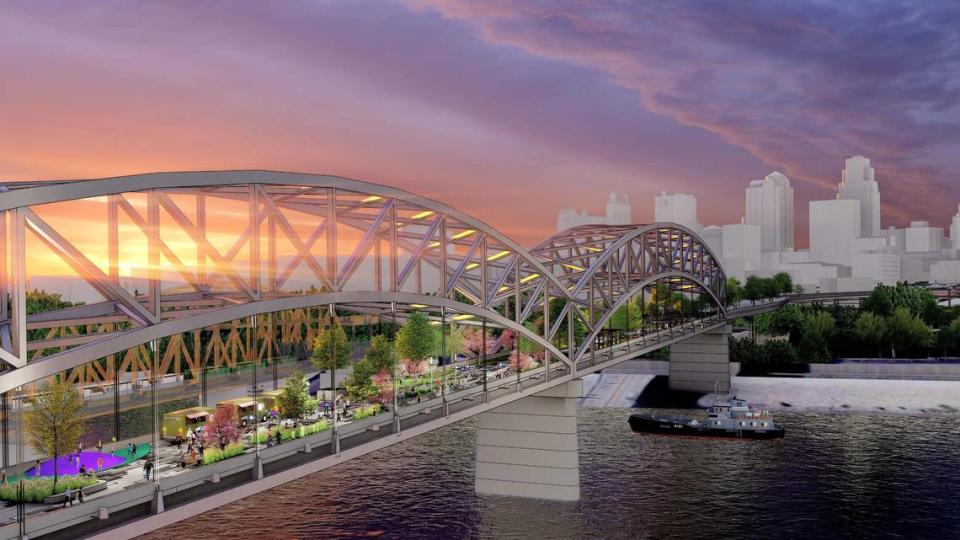Civic group pushes for downtown stadium, interstate removal and more affordable housing

- Oops!Something went wrong.Please try again later.
While downtown Kansas City has benefited from billions in public and private investments over the last 20 years, the Downtown Council believes there’s plenty more work to be done remaking the city center.
The group, which represents residents and businesses in and around downtown Kansas City, unveiled a 10-year plan for the area on Tuesday. It includes more than 180 recommendations to make downtown more livable, connected and prosperous.
Those include everything from adding more east-west connections, the installation of more art and public parks, and a new downtown stadium for the Kansas City Royals.
The council also suggests reimagining interstate highways and reconfiguring the downtown loop. It calls for removal of the North Loop, which would connect downtown with the River Market. And it recommends a deck over Interstate 670 to connect downtown with the Crossroads Arts Districts.

Bill Dietrich, president and CEO of the downtown group, said Kansas City has seen a revival since the urban blight that defined downtown 20 years ago.
“We are really building on a foundation of success,” he said.
But Dietrich acknowledged that the downtown renaissance has not benefited all residents.
“The wealth creation has not been experienced equitably,” he told a crowd gathered at 18th and Vine on Tuesday evening.
The Imagine Downtown KC 2030 plan calls for renewed investments in historically disenfranchised neighborhoods, connecting various neighborhoods and growing the stock of “stable and affordable housing options.”
“While much of the Downtown has thrived, east and west communities have simply not experienced an equal degree of investment and attention,” the 92-page plan says. “These areas have experienced slow growth, job shortages, lack of access to basic amenities and housing, and poor accessibility to other neighborhoods.”
Since 2010, more than 5,800 housing units have been added to the area, the downtown council says. Nearly 70% of those units have been added around the Kansas City Streetcar line.
To combat displacement of existing residents, the organization calls for the creation of new funding sources for affordable housing, suggests nonprofits help low-income residents purchase their own homes and calls for the formation of a grant fund to help with emergency repairs so homeowners don’t lose their homes to citations and fines.

The Downtown Council casts a wide net in its definition of downtown, including 22 neighborhoods in the plan area. Its area is bounded by the Missouri River in the north, the state line to the west, Woodland Avenue to the east and 31st Street to the south. It includes neighborhoods like the West Bottoms, Pendleton Heights and Wendell Phillips.
The growth of downtown was ushered in by the investment of millions of city dollars into amenities like the Power & Light District and the T-Mobile Center. And private developers have received massive public subsidies to build office buildings, hotels and apartments.
“A great city, a great region has a great downtown,” Kansas City Mayor Quinton Lucas said, “and it isn’t just office buildings — although that’s an important part. It’s cultural spaces, it’s new amenities, it’s respecting so many cultures that crossroad through this area.”
While Lucas himself and other council members have sought to reform economic development incentives, he told the crowd that city leaders remain committed to “building a stronger Kansas City.”
“Yes, we have many reformers. Yes, each day we ask how we can do better,” the mayor said. “But we also ask how we make sure that we build a downtown for the next generation and for years to come.”
The new plan from the downtown council reads like an urbanist’s wish list.
It envisions more walkable streets, new mobility options and large investments in sustainability.
It calls for expansions of the Kansas City Streetcar to North Kansas City, Kansas City, Kansas, the 18th & Vine district and Independence Avenue.
And it recommends creation of a new urban park atop the Buck O’Neil Bridge, reinventing older green spaces like Washington Square Park near Union Station and creating a space for concerts and recreation at Barney Allis Plaza near the Kansas City Convention Center.

“I think all this stuff is cool, but the question is how do you pay for it?” Lucas said after the event. “A lot of Kansas Citations, myself included, would love to see everything they talked about. I think that’s the story with baseball and everything else.
“But the real question is how is it financed, how are we looking to make sure that it isn’t just public investment coming from Kansas City’s taxpayers to help build all of it? Because I think they have already invested mightily.”

